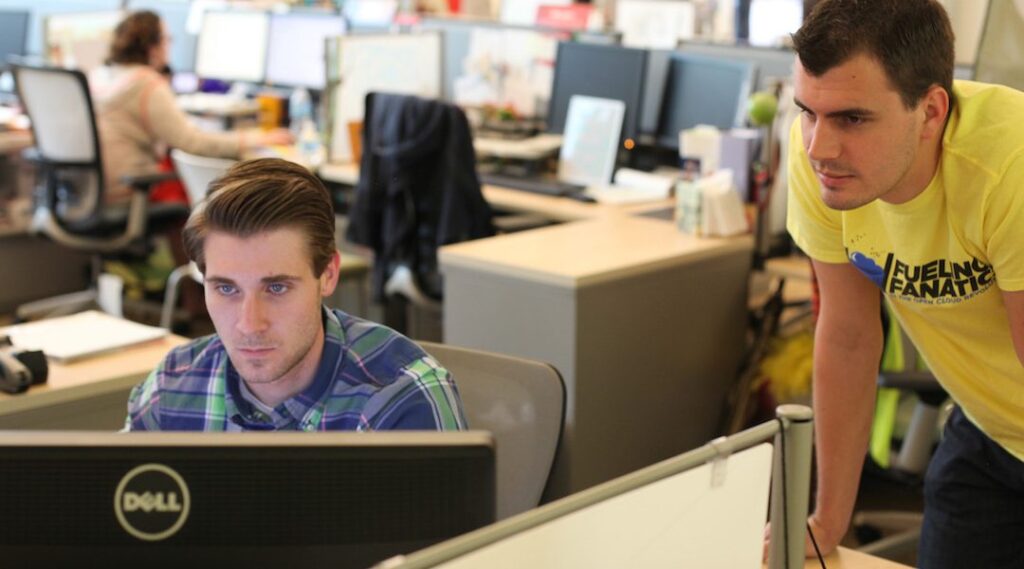How We Jell at Rackspace [Interview with Juan Montemayor]

The first thing you see on Rackspace’s website says everything you need to know about who the company is and what it offers.
Trusted by the majority of the Fortune 100.
A leader in the Gartner Magic Quadrant for cloud-enabled managed hosting.
The largest managed cloud provider, offering you expertise across the world’s leading clouds.
Those are some pretty grand promises on which to deliver—the kind that require a lot of fast decision-making and behind-the-scenes collaboration.
Which is exactly what Juan Montemayor powers his team to do. Juan is a senior manager of software development at Rackspace, leading the day-to-day operations of a core group of product engineers and developers. He had some great management insights to share during a recent conversation with the Jell team:
How does the current structure of Rackspace teams differ from team dynamics of a decade ago?
Remote work is a huge part of our culture. That used to be a rarity; sometimes seen as a privilege. Now it’s a given. I can find talent and pursue it without having to worry about location, since tools and technology now exist to help us communicate the ways we need to.
We’re very distributed. Some employees are in Zurich; others are in Seattle, Austin and Dallas. While there’s a core of team members in San Antonio, Texas, I treat our entire team as a remote team. I’m really focused on leading that team in a way that lets us scale and grow organically. For me, it’s very important that team members all work well together.
How do you keep everyone in sync without those in-person communications from day to day?
I’m a big believer in team dynamics and ensuring everyone will work well together. So when it’s time to hire, that’s what I look for. It’s not that we’re looking for a specific aptitude, but rather the right sort of disposition—the right temperament and the right style for our team, specifically. Communication is the number one skill because we are always collaborating and sharing.
What are some of the biggest communication challenges you’ve faced?
Well, there’s a very different set of challenges with a remote team compared with having everyone in the office. For example, when everyone’s sitting in a room, you can get a lot of information and insights just through nonverbal cues and the way people talk. Again, the key for us has been to handle everything the same way. As long as one person’s remote, we’ll all operate remotely.
What tools do you use?
We use Github heavily and are always playing with different tools. For the longest time we used Hangouts to do our huddles. Now we use an internal tool for our videoconferencing.
So the majority of our communications go through Github, Slack and Jell, and anyone who’s a part of the team needs to be comfortable collaborating through those channels. We like Jell because it had a really great interaction with Slack, which was key. Slack gives us our sense of presence, and Jell has that nice interface and the ability to go back and forth between the two.
Have you developed any solutions that have proven particularly helpful?
One thing that’s working well is our structure for one-on-ones, which I conduct remotely using Jell as the base. When I started playing around with Jell’s reporting features, I put together a pre-one-on-one with three questions to gauge if there’s anything I need to be doing or focusing on as a manager:
- How are you feeling? (Using a slider where 0=Horrible and 10=Awesome)
- Is there anything you want to make sure we talk about in our next sync?
- Is there anything you need me to take action on immediately?
I look at the answers right before the meeting so that I can be sure to bring up any important issues, which can be easy for developers to forget once they’re “in the zone.”
We use Jell reports a lot. Every week, I can look back at the previous week’s standup reports to see what the team worked on and accomplished. I’m never at a loss for what’s going on with my team, and it’s helpful when putting together weekly corporate reports.
What advice would you give to other teams?
Pick a communications medium and be consistent with it until you find something that puts everyone on equal ground. If you do standups on a call, put everyone on the actual call. If you use videoconferencing, put everyone on video. You want everyone to use the same communication medium because it sets the right tone. Learn what’s synchronous and asynchronous so you can determine what’s helpful and what’s just noise. The key is distilling things down to the small set of tools that actually work for you.
Great advice, Juan! Do you know someone who should be featured in our How We Jell series? Let us know.

Unite your team with daily standups, make progress visible, and reach goals faster—all in minutes a day.